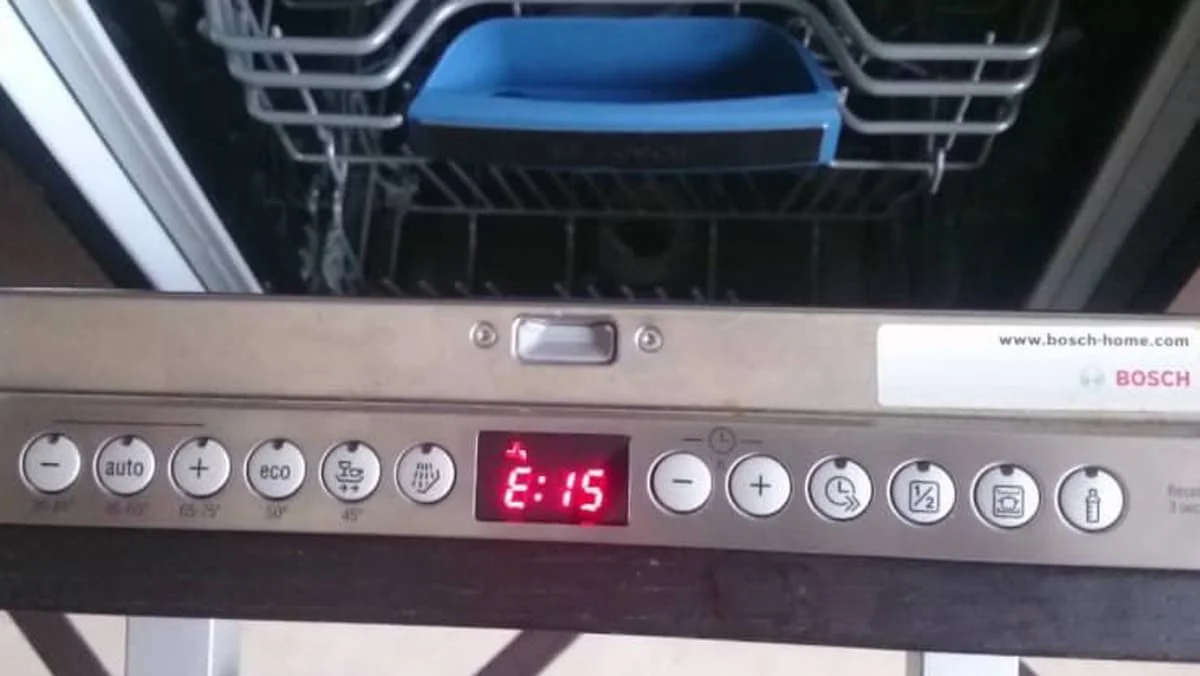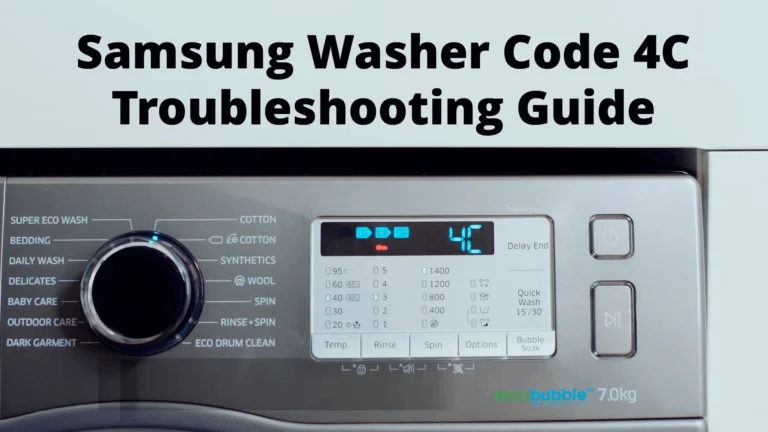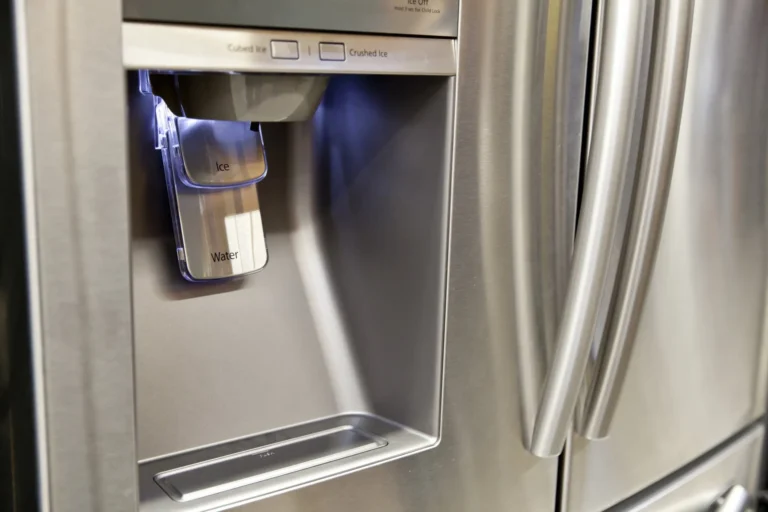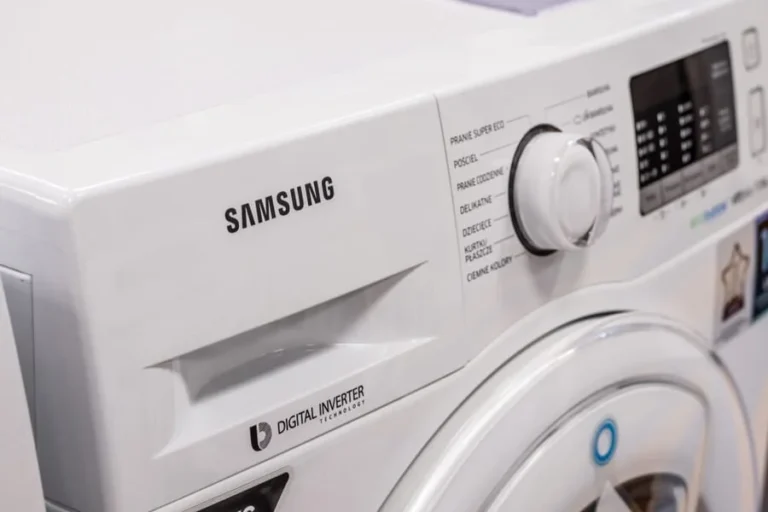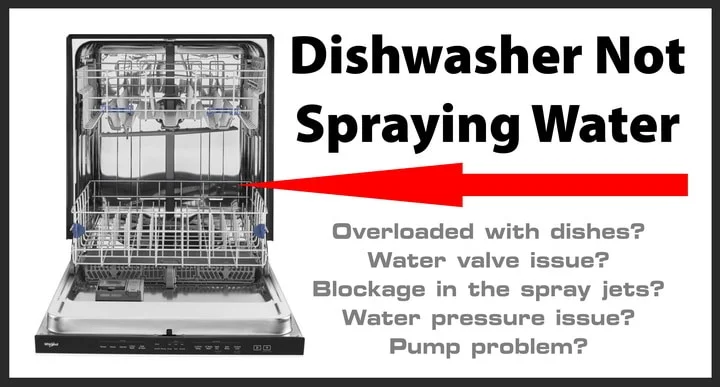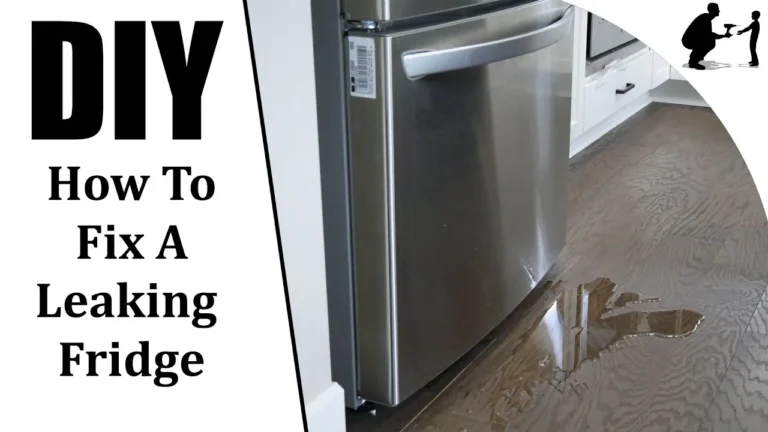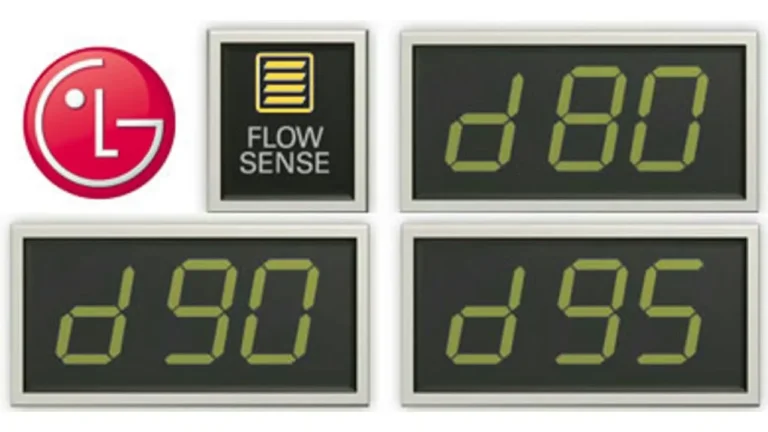Troubleshooting the Bosch Dishwasher E15 Error Code
The E15 error code on Bosch dishwashers indicates there is excess water in the base pan of the dishwasher. This triggers the safety switch that shuts down operation to prevent leakage and flooding. While frustrating, this error code can often be resolved with some basic troubleshooting steps. This guide will walk through the common causes of the E15 error and provide fixes to get your Bosch dishwasher draining properly again.
What Causes the E15 Error Code?
The E15 error points to a drainage issue within the dishwasher. There are a few potential sources of this excess water buildup:
Clogged or blocked drain hose/pump – Food debris, bits of broken glass, utensils or other objects can make their way into the drain hose or pump. Over time, this builds up and prevents proper water drainage. This is one of the most common reasons for E15 errors.
Faulty drain pump – The drain pump is responsible for pushing water out of the dishwasher through the drain hose. If this pump malfunctions or fails altogether, water can back up in the base.
Clogged or blocked filters – Bosch dishwashers have a filter system to catch food particles. If these filters become excessively clogged, they impede drainage.
Improper installation – If the drain hose is kinked, too high or otherwise incorrectly installed, it can cause poor water flow and drainage.
Bad float switch – A float switch sits in the base pan and detects water levels. If this switch malfunctions, it will erroneously trigger the E15 code.
Control board issues – Though not common, glitches in the control board can also lead to faulty E15 alarms.
The first step is to pinpoint the origin of the excess water. The sections below provide tips on how to do this for the various potential causes.
Step 1: Perform Initial Troubleshooting Checks
When an E15 error first appears, start simple. Here are some preliminary troubleshooting checks to try first:
Check for leaks underneath the dishwasher – Get on the floor and look under and around the perimeter of the dishwasher. Check for any pooling water or drips indicating a leak.
Ensure the water supply is turned on – Accidentally turning off the hot water supply will prevent the dishwasher from draining. Make sure this valve is in the open position.
Confirm the drain hose is installed correctly – The drain hose needs a high loop above the sink trap so water does not flow back into the dishwasher. Verify it is routed properly.
Reset the dishwasher – Turn off power to the dishwasher for 30 seconds to reset the control board. Turn it back on to see if this clears the error.
Drain any standing water – Use a wet/dry shop vac to drain any pooled water in the bottom of the dishwasher. This may allow normal operation to resume.
Try running a rinse cycle – Choose the shortest cycle with the heat drying option turned off. See if the dishwasher can now drain out the base.
These simple steps provide a starting point when dealing with an E15 drainage issue. While they may resolve the problem, most likely a more involved repair will be required.
Step 2: Inspect the Drain Pump and Hose
If basic troubleshooting does not eliminate the E15 error, the next step is inspecting the drain pump and hose. Follow these steps:
- Disconnect power to the dishwasher – Turn off power at the breaker or unplug the unit before any disassembly.
- Detach the toe kick – The plastic toe kick panel at the bottom front pops off for access. Carefully pry it off with a flathead screwdriver.
- Remove the drain hose – Locate the rubber drain hose under the dishwasher chassis. Disconnect it from the drain pump outlet.
- Check the hose – Inspect along the hose’s length for kinks, cracks or blockages. Confirm no sections collapse when pinched. Replace if damaged.
- Flush the hose – Use a funnel to pour water into the hose to flush out any debris.
- Examine the drain pump – With the hose detached, you can check the pump inlet and impeller for obstructions. Remove any debris present.
- Reattach the drain hose – Securely reconnect the hose to the drain pump outlet. Make sure the clamps are tight.
- Replace the toe kick – Reattach the front panel once complete. Restore power to the dishwasher.
The majority of E15 issues stem from clogs in the drain system parts. Thoroughly checking the drain line and pump is an important troubleshooting step. Doing this carefully may get your dishwasher draining normally again.
Step 3: Clean Out a Clogged Drain Filter
Another common source of drainage problems is a blocked drain filter. Bosch dishwashers have a multi-part filter system to prevent food particles from recirculating. Over time, greasy and dirty dishes can clog these filters. Follow these steps to clean them out:
- Locate the filter assembly – The main filter is under the bottom spray arm. Twist the arm counter-clockwise to detach it for access.
- Remove the filters – Unscrew the central filter from the assembly to slide it out. Remove the microfilter wrapped around it too.
- Clean the filters – Rinse the filters under running water. Use a soft brush to clear dirt and debris trapped in the mesh.
- Check the sump – Shine a flashlight into the filter cavity to check for any remaining food particles. Remove any present.
- Reassemble in reverse order – Return the microfilter around the main filter and screw back into place. Replace the spray arm.
- Confirm proper drainage – Run a short cycle to verify the E15 error does not return. Repeat filter cleaning if needed.
While rinsing filters periodically helps avoid issues, deep cleanings are sometimes required. Taking apart the filter system provides full access for a thorough scrubbing. Keeping these components debris-free is key to preventing drain clogs.
Step 4: Examine Installation of Drain Hose
If cleaning the drain pump and filters does not solve the E15 problem, improper installation of the drain hose may be the culprit. Check the following:
High drain loop – The hose must arc at least 28″ up from the cabinet floor before going into the drain. This prevents backflow of water.
No sharp bends – Check that the hose does not have any sharp 90 degree kinks that can impede drainage.
Secure fittings – Confirm the hose clamps are tight at the pump outlet and drain connection. Leaks here can cause issues.
Proper sink trap connection – Make sure the hose connects properly above the siphon break in single bowl sinks.
No foregin objects – Check that hoses do not have rags, cleaning supplies or other objects blocking them.
Insulation in place – Dishwasher hoses need insulation wraps in some locations to prevent condensation buildup.
No damage – Inspect the length of the hose for cracks, cuts or perforations that could lead to leakage.
Drain hoses that are incorrectly routed or connected can definitely contribute to E15 errors. Carefully examining the installation can uncover drainage problems. Adjust hose as needed.
Step 5: Test and Replace Drain Pump
If all above steps fail to resolve the issue, the drain pump itself may need replacement. Start with these tests:
- Check voltage – Use a multimeter to confirm 120V power at the pump terminals during operation. No voltage points to control board issues.
- Listen for hum – Run a cycle and listen for a low hum indicating the pump is running. No sound can signify a seized pump.
- Test for continuity – With power disconnected, check continuity across the pump motor windings. Open circuits require pump replacement.
- Check impeller rotation – Remove power, then manually turn the motor shaft. Stiff rotation indicates a bad pump bearing.
- Replace if faulty – If any of the above tests fail, the drain pump needs replacing. Match new pump to original model specifications.
While not the most common factor, malfunctioning drain pumps can certainly cause an E15. Thorough testing provides confirmation a replacement is required. Be sure to buy a pump compatible with your Bosch model.
Step 6: Replace Float Switch
The float switch is another component that can lead to erroneous E15 errors. This small switch sits in the base pan and detects water levels. If readings are incorrect, it will shut down operation even with normal water levels. Try these float switch tests:
- Check switch movement – Gently lift the float with your finger. It should move up and down freely without sticking. Sticky movement indicates a bad switch.
- Confirm switch closure – Use a multimeter to check that the switch contacts close when the float is up, and open when down.
- Inspect switch mounting – Make sure the float switch is firmly clicked into its plastic housing without any looseness.
- Check switch wiring – Confirm the float switch wiring is intact and firmly connected to the main wiring harness.
If any of these checks fail, the float switch will need to be replaced. Match the replacement to the specific model. Make sure it clicks firmly into place during installation.
Step 7: Reset Control Board
On rare occasions, the E15 can stem from glitches in the control board’s programming. Try the following control board resets:
- Hard reset – Unplug power from the dishwasher or turn off power at the breaker. Wait 30 seconds before restoring power.
- Keypad reset – Press and hold the Start and Options keys for 5 seconds until the control panel beeps.
- Tech mode reset – Enter dishwasher tech mode by holding down the Start and Half Load keys for 3 seconds to access diagnostic menus. Select the reset option.
- Factory reset – Enter tech mode using the method above. Choose the option to restore factory default programming.
Cycling power or resetting the computer can clear any weird memory bugs causing false E15 alerts. Be aware this erases all custom settings. Only do these procedures as a last resort.
When to Call a Repair Technician
If you have worked through all the troubleshooting steps above and the E15 error persists, it is time to call in a professional:
- Bosch factory authorized technicians have specialized training to fully diagnose E15 causes.
- They have access to technical resources from Bosch that help troubleshoot unusual issues.
- Technicians have experience resolving tricky drain problems that DIYers may miss.
- They can test dishwasher components like pumps and control boards to isolate failures.
- Repair pros have the tools, parts and expertise to make fixes you may not be able to do on your own.
While E15 repairs like clearing hoses and cleaning filters are doable yourself, complex fixes are best left to the professionals. Their advanced technical skills can get your Bosch dishwasher draining properly again.
Preventing Future E15 Error Codes
No matter the cause, an E15 error code indicates there is a drainage issue allowing water to accumulate in the base. Take these steps to avoid recurrence of the problem:
- Periodically check and clean dishwasher filters. Don’t allow debris to accumulate.
- Use dishwasher cleaning products to clear grease and limescale.
- Take care not to wash items that can block the drain pump and hoses. Avoid broken glass, bones, etc.
- Confirm dishes are scraped of food before loading. Don’t let large particles go down the drain.
- Verify the drain hose remains kink-free and is installed correctly.
- Have a technician assess your dishwasher if E15 errors persist. There may be an underlying issue needing repair.
- Consider a dishwasher water leak detection system that can shut off water if sensing any leakage.
Staying vigilant against drainage problems minimizes the chances of another E15 error occurring. But should it happen again, this guide covers the full troubleshooting requirements to get your Bosch dishwasher back to normal operation.

